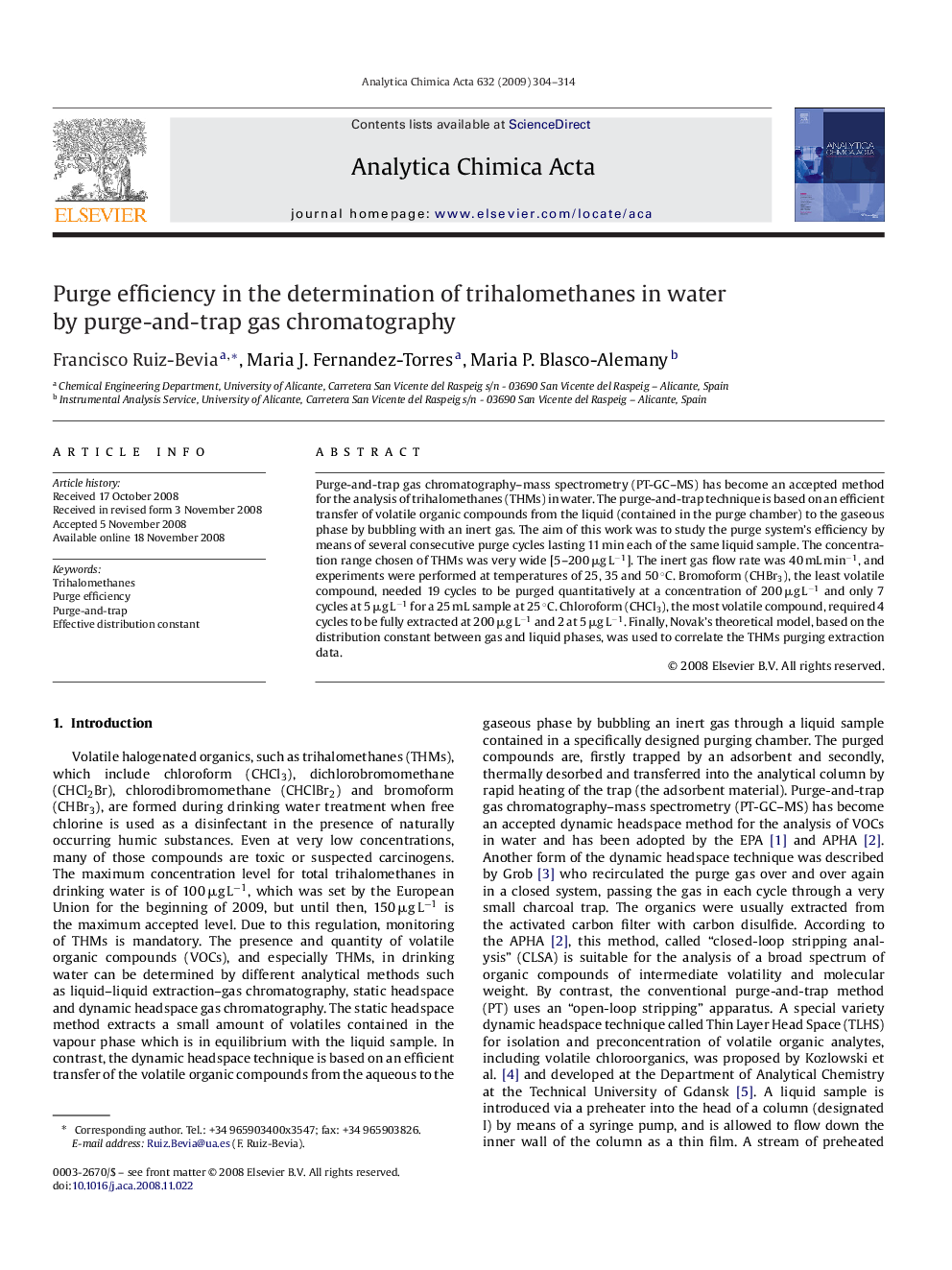| Article ID | Journal | Published Year | Pages | File Type |
|---|---|---|---|---|
| 1168390 | Analytica Chimica Acta | 2009 | 11 Pages |
Purge-and-trap gas chromatography–mass spectrometry (PT-GC–MS) has become an accepted method for the analysis of trihalomethanes (THMs) in water. The purge-and-trap technique is based on an efficient transfer of volatile organic compounds from the liquid (contained in the purge chamber) to the gaseous phase by bubbling with an inert gas. The aim of this work was to study the purge system's efficiency by means of several consecutive purge cycles lasting 11 min each of the same liquid sample. The concentration range chosen of THMs was very wide [5–200 μg L−1]. The inert gas flow rate was 40 mL min−1, and experiments were performed at temperatures of 25, 35 and 50 °C. Bromoform (CHBr3), the least volatile compound, needed 19 cycles to be purged quantitatively at a concentration of 200 μg L−1 and only 7 cycles at 5 μg L−1 for a 25 mL sample at 25 °C. Chloroform (CHCl3), the most volatile compound, required 4 cycles to be fully extracted at 200 μg L−1 and 2 at 5 μg L−1. Finally, Novak's theoretical model, based on the distribution constant between gas and liquid phases, was used to correlate the THMs purging extraction data.
